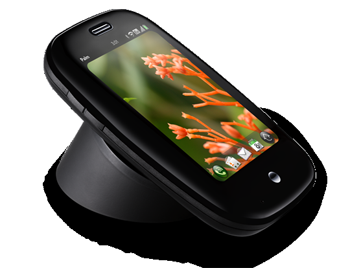
Wireless charging has been around for a long time. It’s what powers electric toothbrushes and cordless shavers and well as a lot of medical devices. But it has been very slow to make it to mobile electronic devices, but the Wireless Power Consortium aims to change that as it pushes ahead with its Wireless Qi (pronounced Chee) standard.
To date, wireless charging of mobile devices has been associated mainly with companies on the brink of doom. Palm and, briefly, Hewlett-Packard offered the Touchstone wireless charger for both Pre phones and the TouchPad tablet. Nokia is now offering it on its Lumia phones.
The principle of wireless charging, called resonant inductive coupling, is simple. An alternating current in a coil induces a current in a nearby coil. If the two coils are tuned to the same resonant frequency, the power transfer between them can be very efficient. And if the two coils are the same size, the magnetic field will be contained in the space between them.
The current Qi standard provides for 5 watts of power, adequate for smartphones but not for tablets, which take too long to charge at low wattage. A 10 W standard is on the way, but like all standards bodies, the WPC moves slowly and may take a while. But this is an area where standards are crucial. One of the reasons previous efforts failed to catch on is they were proprietary and the advantage of wireless charging lies in the ability to power a variety of devices from a single charging pad.
A number of handset makers, including Samsung, LG, and Motorola, are members of the consortium and while that doesn’t guarantee they will offer products, it at least shows interest. Delphi, the former General Motors electronics and parts division has just joined, increasing the prospect of automotive charging systems. But Apple is prominently missing from the membership list.
Apple marketing chief Phil Schiller recently dismissed wireless charging as bringing no real advantage to consumers. But WPC Chairman Menno Treffers, of Philips Electronics, says he was off the mark: “That’s a real misconception about what the point is. The point is the difference in the charging experience. I can best explain it by talking about my own experience. I used to have a USB charger on my desk, but in practice, I didn’t use it; it’s a hassle and you tend not to do it.If you have a Qi phone, you just put it on the pad and you pick it up. People keep their batteries charged much better.”
Phil probably has something there. I have an electric toothbrush and it sits in a corner that otherwise would be vacant. It’s the perfect solution for a stationary object that roosts on one nest. The thought of having to drag around or hunt for a special charger is just one more unnecessary grief that rests on the station of gimmickry.
Of course, the driving motivation for induction charging in the bathroom is safety. You really don’t want a toothbrush that’s plugged into the AC. Still, I could see a point to having a location on my desk reserved for a charging pad, but it would have to accomodate a large variety of devices.
Steve, that would be a desk at home, eh? I lost my first iPt at work, to mention only one such occurrence. And such is the way of the world. But agreed, should it be so accommodating and safely secure from hungry fingers, I could see a standardised charger being handy but I doubt it would ever completely relegate the old plug system obsolete.
Well, in my case it would be at home because that’s where I work. But this would work in the office too. For wireless charging to catch on, it has to be both cheap and ubiquitous. In other words, too cheap to steal.
Some really excellent info, I look forward to the continuation.
Some really excellent info I look forward to the continuation.
Great information shared.. really enjoyed reading this post thank you author for sharing this post .. appreciated
Some really excellent info Sword lily I detected this.watch cnn live stream free online
As I website owner I believe the content material here is really good appreciate it for your efforts.Live TV
A big thank you for your blog.Really looking forward to read more.-vox gucken live
I do not even understand how I ended up here but I assumed this publish used to be great .Best Pet Supplies Dog Poop Bags for Waste Refuse Cleanup Doggy Roll Replacements for Outdoor Puppy Walking and TravelLeak Proof and Tear ResistantThick Plastic Assorted Colors5 Count (Pack of 10) – Hot Deals
There is definately a lot to find out about this subject. like all the points you made . – hey dude shoes